Collapse and Revival of the Kashmir Shawl in Late 19th Century
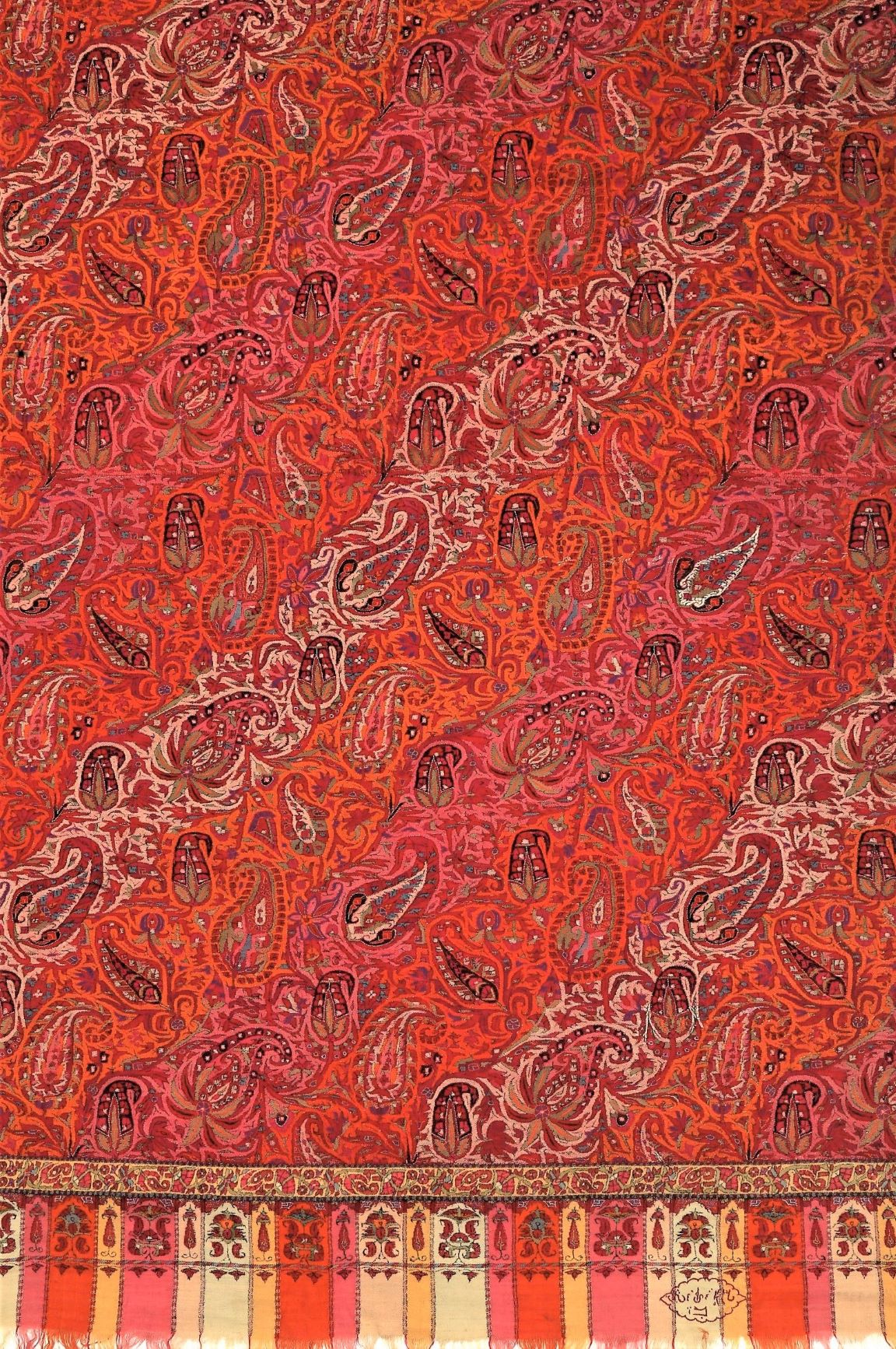
Dorukha, Doranga Lahariya Kani shawl 1890s
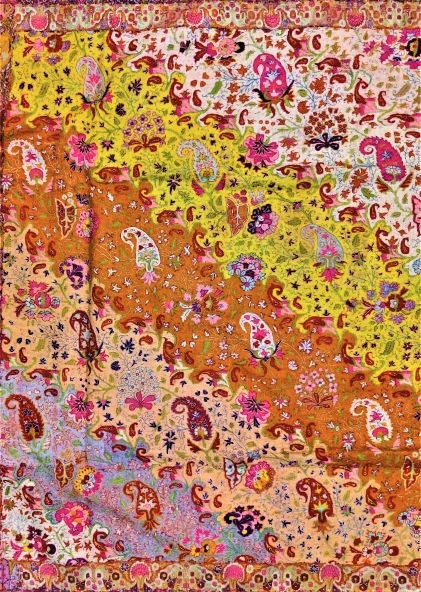
Gulabkar Silk tani Dorukha shawl, 1880s
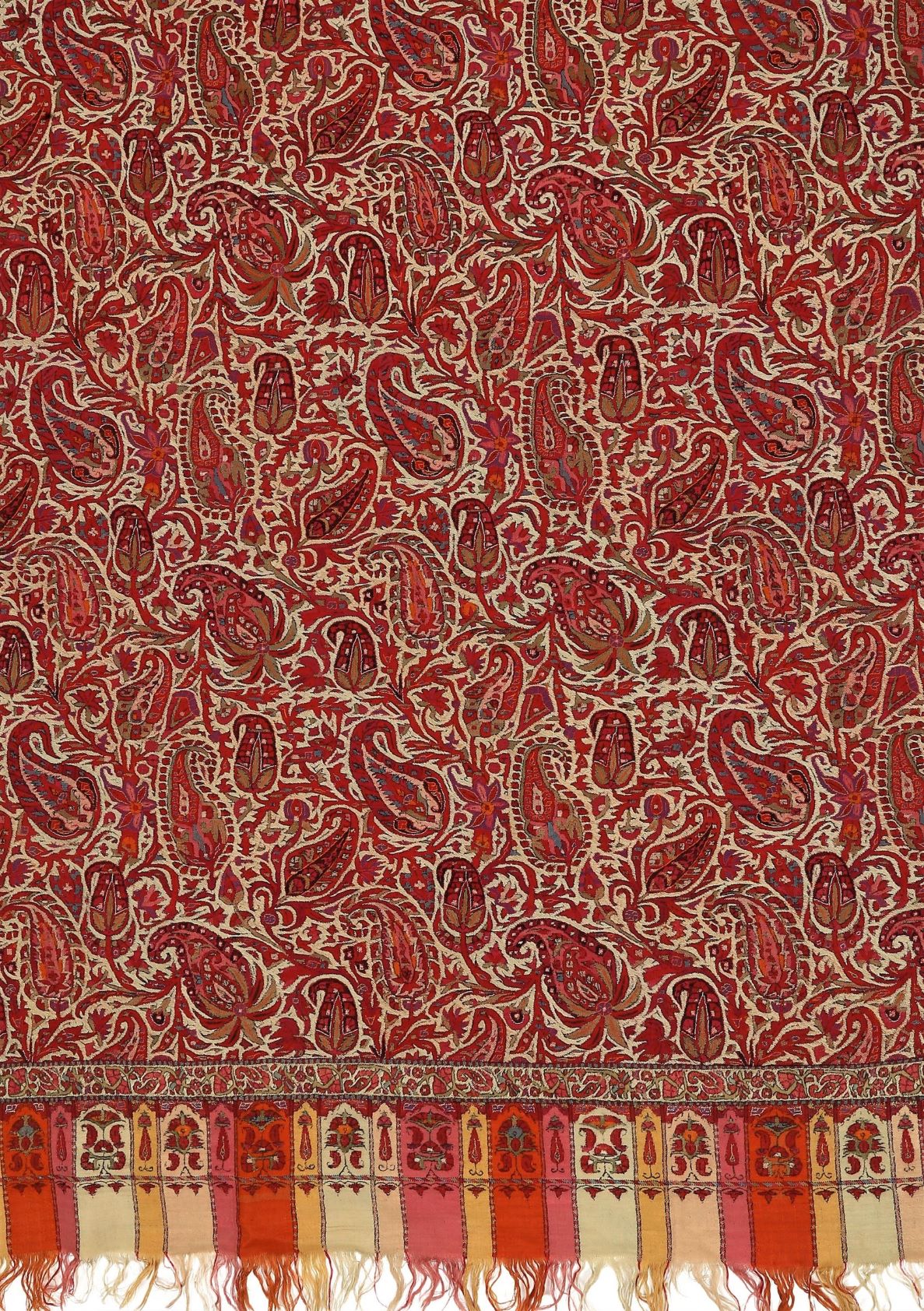
Dorukha Doranga reverse with embroidered background 1890s
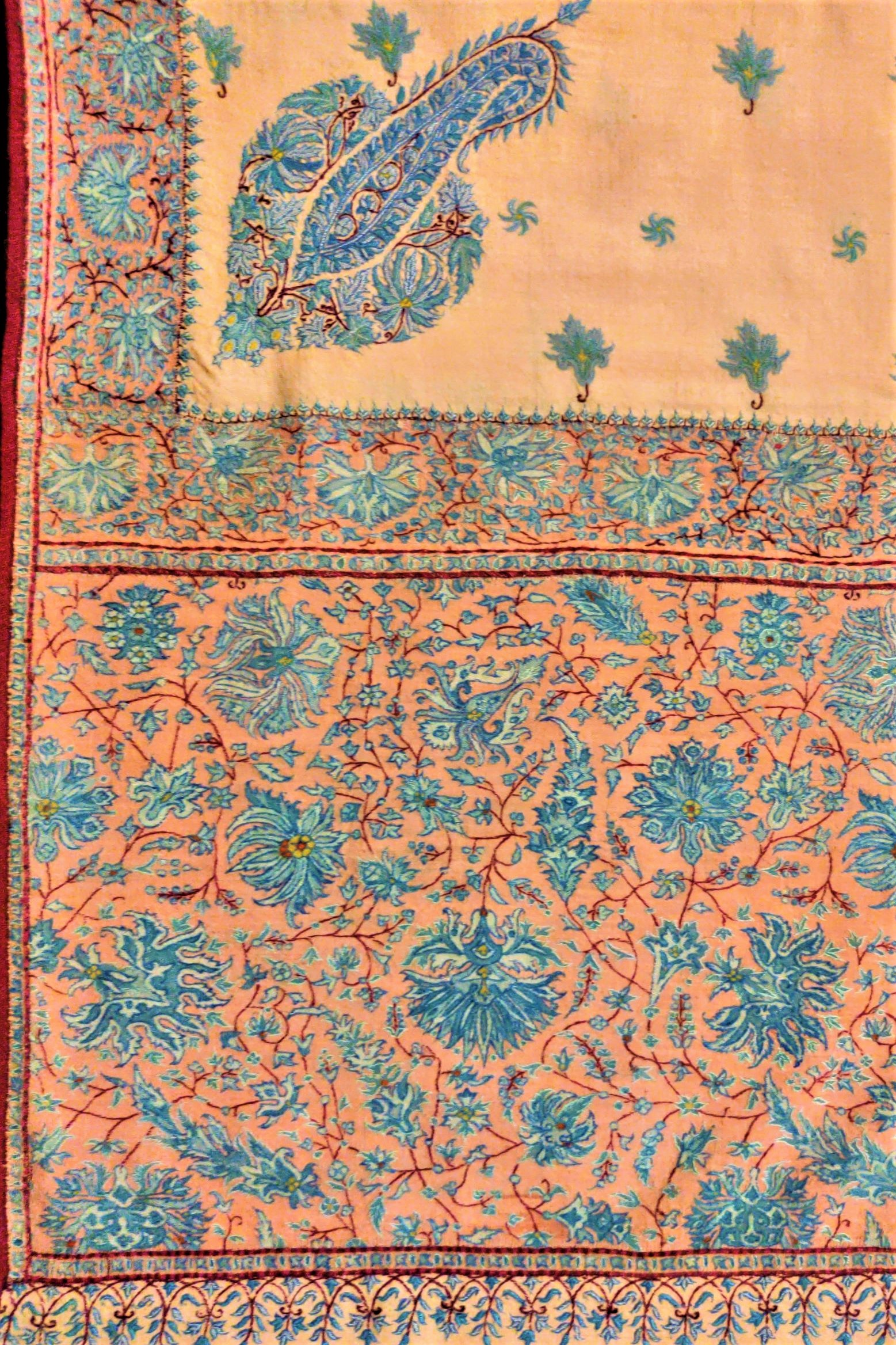
Dorukha Kani palledar with embroidered butis & kunjbutas
The Collapse after 1870 - Kashmir kani shawl industry was at its peak of prosperity and thousands of looms were producing shawls for export that had increased from 171,000 pounds in 1850 to 351,000 pounds in 1866. French agents had arrived in Srinagar and European colors and motifs were beginning to dominate the Kashmirs. Sudden collapse in the next decade came due to exploitation, high taxation (25% ad-valorem and 25% bribes), the Franco-Prussian War (1870-71) that led to the closure of the trade route and the change in fashion in Paris – the “bustle” was introduced that made the shawl look ungainly when draped over it. A major famine in Kashmir from 1877-79 due to excessive rains had a precipitous effect on the poor weaver population that are said to have ‘died like flies’. The British took away the revenue of the landed aristocracy as India’s freedom struggle gathered momentum. Gradually, the impoverishment, prohibitive cost of labour, and lack of patronage led to the disappearance of kani weaving by the 1930’s.
The Revival - The focus of fine weaving had shifted to Punjab and Himachal, and of embroidering fine copies of woven kani to the valley. An ageing decadent Princely class was demanding very intricate and lighter weight shawls in their most cherished colours and shawl motifs and designs. Patronage from Princely States and the landed aristocracy from Himachal, Punjab, U.P (Awadh, Rampur), Rajputana, Central Provinces, Bengal, and Hyderabad continued to keep the Kashmiri manufacturers competing to produce some of the finest shawls human fingers have ever created.
Birth of the Reversible or Dorukha Shawls in the 1860s - Kashmir’s legendary Dorukha was the same on both sides, the effect being achieved by using the single interlocking tapestry weave trimming the threads at the back and embroidering the outlines of all details of the pattern. An ingenious variant of this invention was to use the lighter silk warp (silk tani) and pashmina only in the weft. These exquisite dorukha kanis were intricate, lighter, colourful and luminous. Fewer dorukhas were made in pashmina warp and weft (pashmina tani), which though exquisite, are thicker and heavier. The most highly valued among these are the ‘gulabkar’ or those with a colour palette of pinks, reds, oranges, blues, yellows, etc.
Hyderabadi Kani Shawls from 1880 to 1920s – This amazing invention was defined by large variety of complex shaded and outlined European floral motifs, bright colours and use of chemical dyes. Influenced also by Masulipattinam kalamkari designs and Deccani colour sensibilities, they were popular for royal robes in Hyderabad. Among collectors and dealers, these rarities are called Hyderabadi and are much sought after. Entire shawls are difficult to find. Some fine fragments with silk warp just take your breath away!
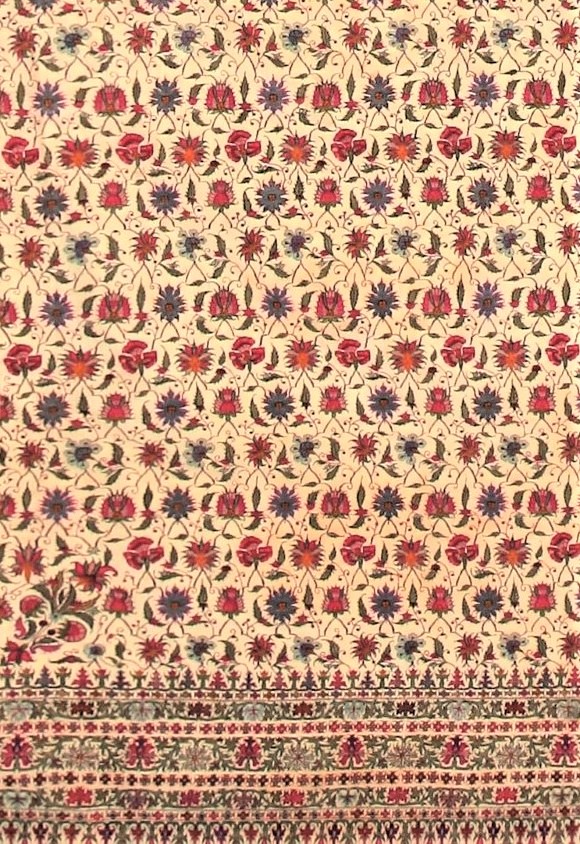
Lucknowkar Pashmina tani Dorukha Shawl, 1880s
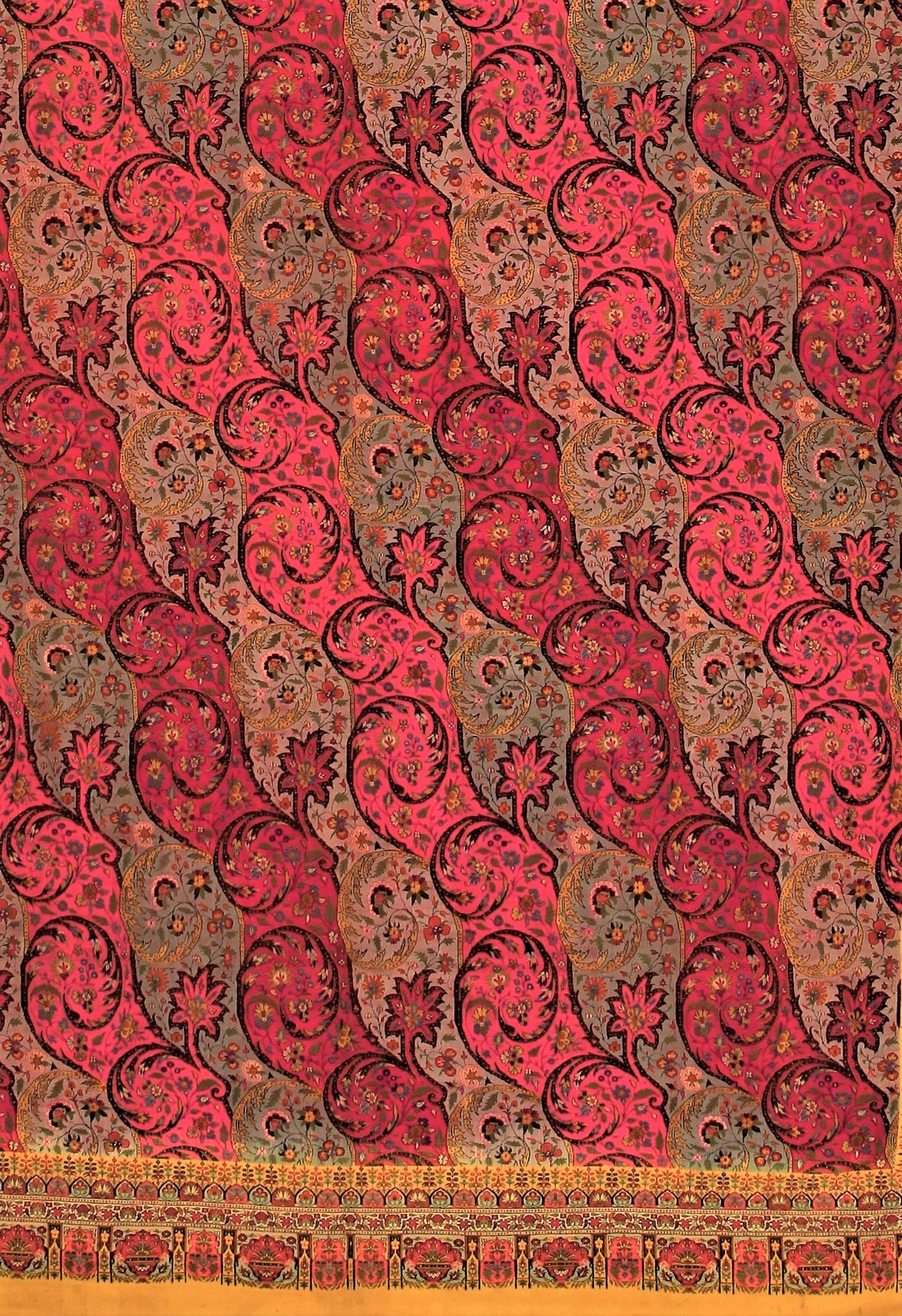
Hyderabadi Lahariya Pashmina Ekrukha, 1890s
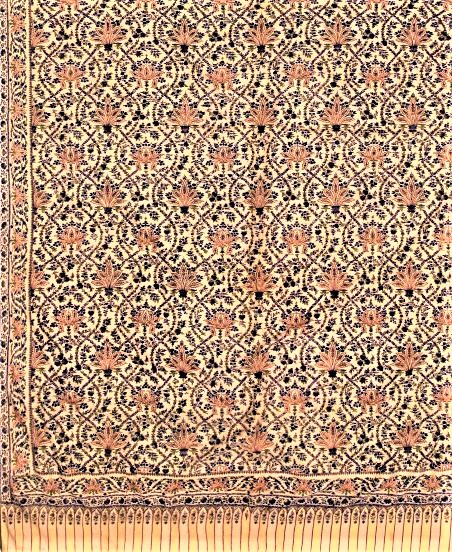
Lucknowkar Dorukha Silk tani shawl
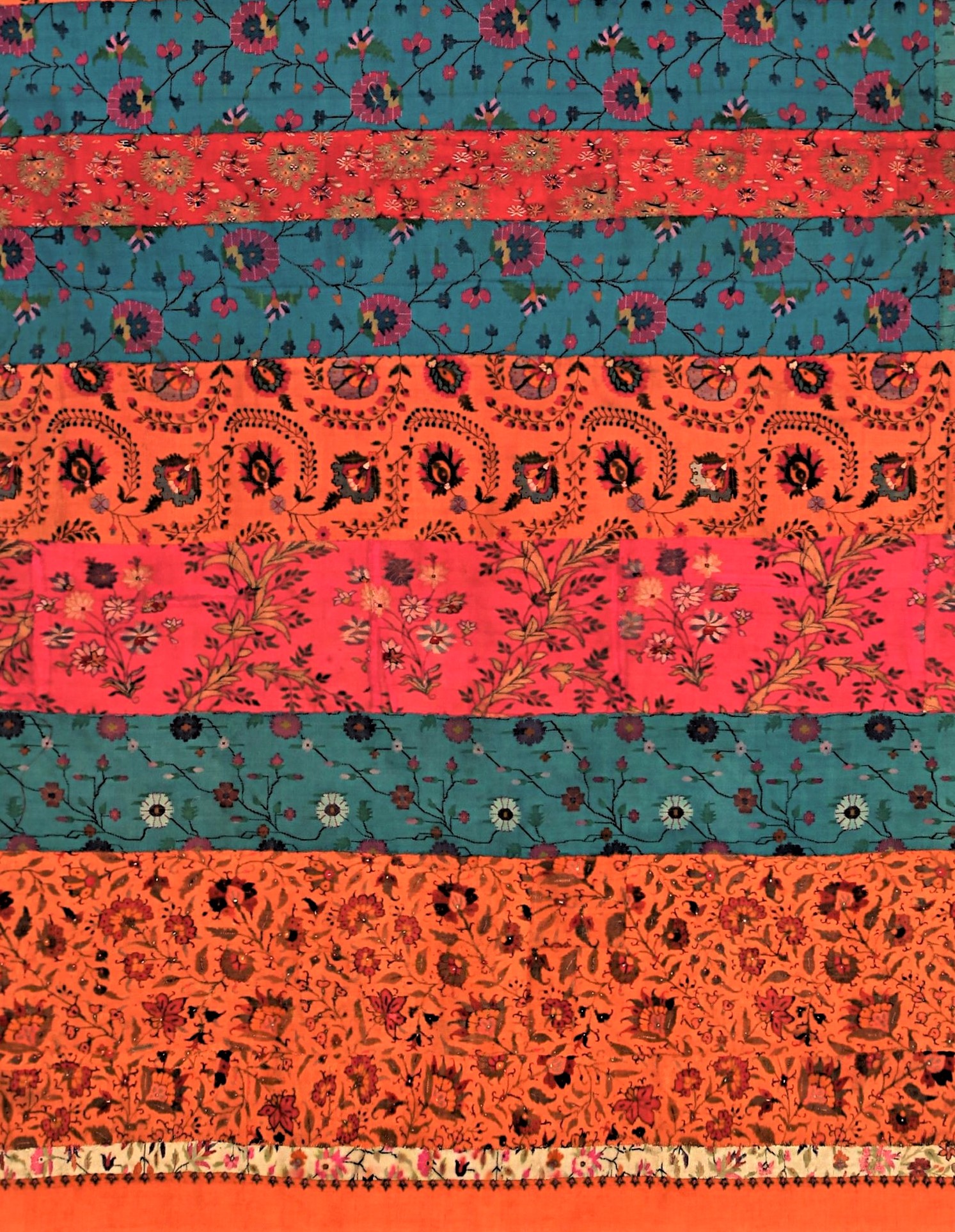
Hyderabadi panels Pashmina Kani shawl
